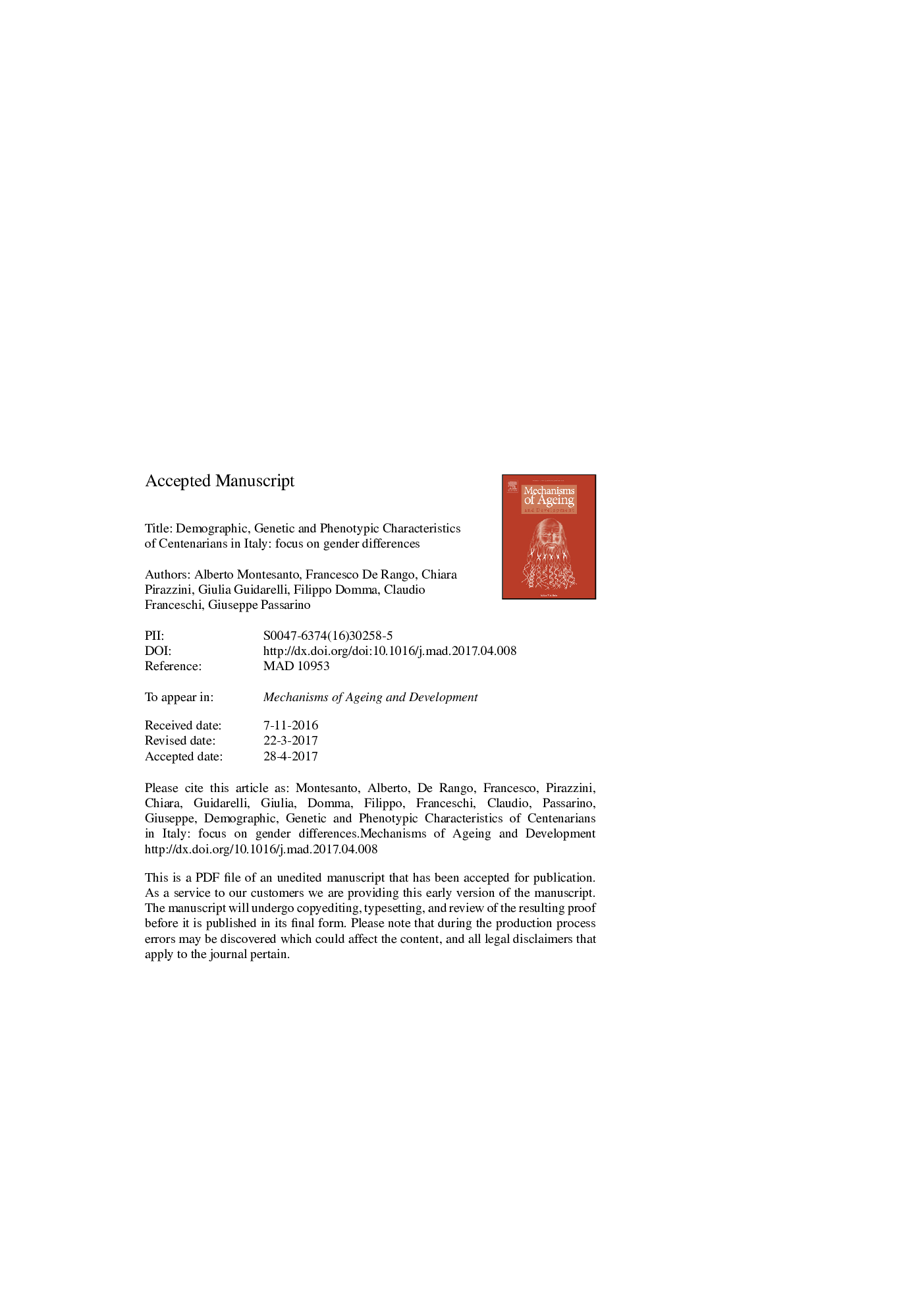| Article ID | Journal | Published Year | Pages | File Type |
|---|---|---|---|---|
| 5503613 | Mechanisms of Ageing and Development | 2017 | 25 Pages |
Abstract
An impressive and coherent series of epidemiological data from different populations (New England Americans, Mormons, Ashkenazi Jewish, Icelandic, Okinawan Japanese, Italians) suggests that long-lived subjects able to reach the extreme limits of human life, such as centenarians and supercentenarians, represent an extraordinary and informative model to identify the mechanisms responsible for healthy aging and human longevity. In most studies, genetic, demographic and phenotypic characteristics of longevity are discussed separately. However, longevity is a very complex trait due to the complicated interactions of numerous genetic and environmental factors. It is therefore necessary to analyse centenarians with a multidimensional approach, trying to consider different aspects simultaneously. In this review we will focus on Italian centenarians, who have been extensively studied for many years with different approaches, in order to show their peculiarities and the emerging data from the studies carried out on this exceptional population.
Keywords
ADLECHAGRsELIMMSEOECDMitochondrial DNAApoeapolipoprotein EIdealDemographymtDNAOrganization for Economic Co-operation and DevelopmentBody-mass indexBMIcentenariansActivities of daily livingGenome-wide association studyGWASMini-Mental State Examinationgenetic risk scoreSingle nucleotide polymorphismHealthy agingSNPGenetics
Related Topics
Life Sciences
Biochemistry, Genetics and Molecular Biology
Ageing
Authors
Alberto Montesanto, Francesco De Rango, Chiara Pirazzini, Giulia Guidarelli, Filippo Domma, Claudio Franceschi, Giuseppe Passarino,
